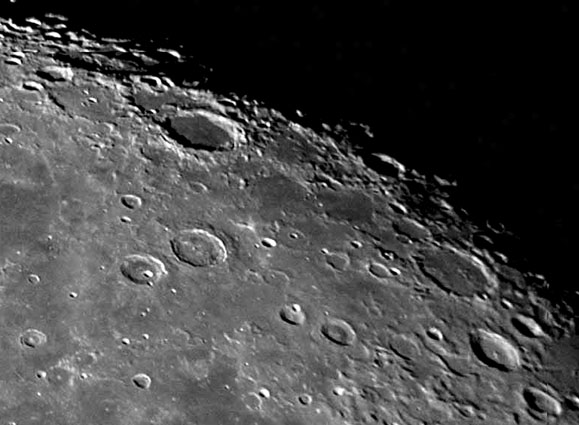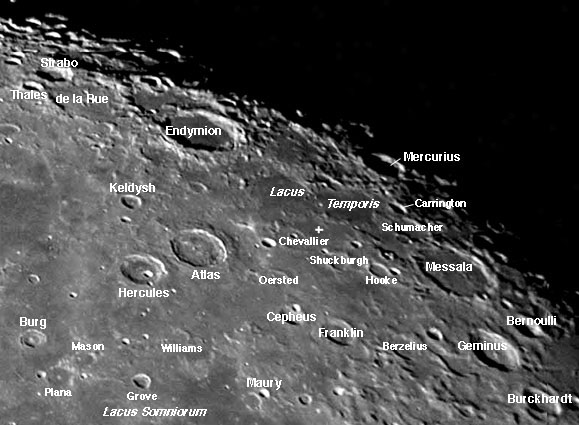August 9, 2015
NE Backwater
Originally published August 8, 2004
Image Credit: Piergiovanni Salimbeni |
|
NE Backwater A few superstar lunar attractions - Plato, Copernicus, Straight Wall, etc - garner the lion's share of observers' attention, thereby leaving many lunar areas overlooked. Examples are the highlands west of Oceanus Procellarum, most of the southern highlands (other than Tycho and Clavius), and the vast northeastern region poleward of Crisium. If it wasn't for Atlas and Hercules this area would never be visited. And the reason, of course, is that it lacks complex big craters, domes, faults, maria and an enclosing impact basin to give it structure. This regional overview by Pier Salimbeni displays the landscape from 70° E inward. The three biggest craters are de la Rue (136 km), Endymion (125 km) and Messala (124 km), each lacking a central peak and having a relatively flat (i.e., boring) floor. Between Messala and Endymion are two roughly 100 km circular, flat-floored ruined craters. They look like an off-kilter pair of glasses and are dignified with the name of Lacus Temporis. Would you guess that this benighted Lake of Time is near the middle of a recently discovered ancient impact crater? Altimetry data from Clementine depict a 350 km wide depression centered at 45°N, 55°E (a white plus on the mouseover image). Altimetry basins are detected because they are a depth anomaly but no depth was given for this depression. Take a look, especially at low sun angles, to see if you can find this hole - it should extend from almost to Endymion to the north rim of Messala. And if you find yourself in this NE backwater when the sun is high and the seeing good, take a look at Franklin, which like Atlas, has small, dark pyroclastic deposits on its floor. This region is getting more interesting... Technical Details: Related Links: Yesterday's LPOD: Straight Range Tomorrow's LPOD: Australian Eclipse |
Author & Editor: |
COMMENTS?
Register, Log in, and join in the comments.





